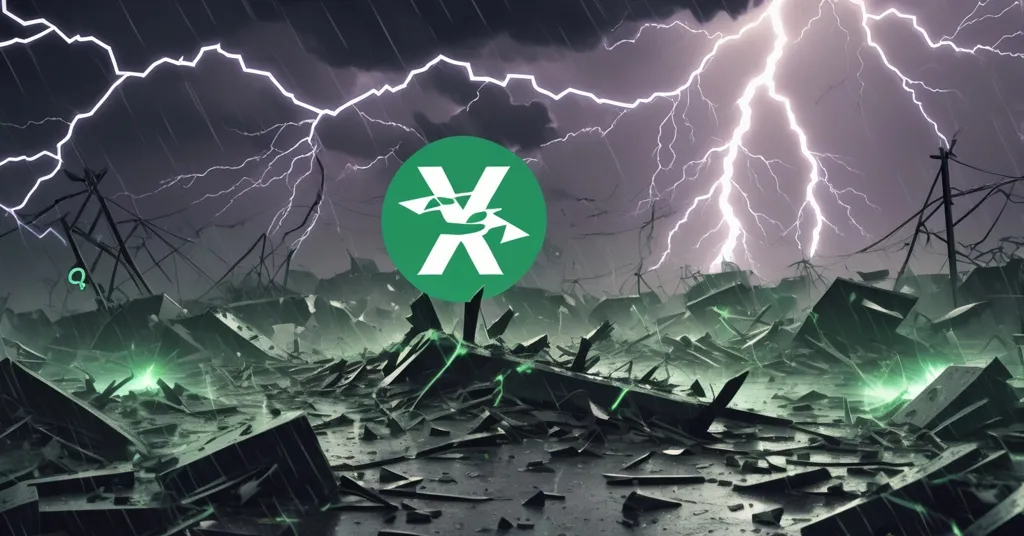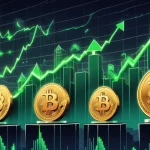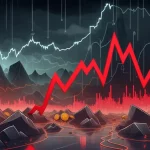XRP Price Analysis: Can It Recover After $19M Crypto Market Crash?

XRP Price Outlook: Recovery or Ruin After the Crypto Market Massacre?
The crypto market just endured a savage beating, with over $19 million in leveraged positions wiped out in a brutal liquidation event, and XRP, the native token of Ripple, took a hell of a hit. From a gut-wrenching drop to a shaky rebound, we’re digging into what happened, where XRP stands, and whether it can rise from the ashes—or if more pain is on the horizon.
- Market Devastation: $19M in leveraged positions liquidated in a flash.
- XRP’s Plunge: Price crashed from $2.8 to $1.26, bounced to $2.3.
- Recovery Odds: Historical trends and key levels offer hope, but risks loom large.
The Crash: What Triggered the Chaos?
The cryptocurrency market got slammed with one of the nastiest downturns in recent memory, obliterating $19 million in leveraged positions across exchanges. For those new to the game, leveraged positions are essentially bets made with borrowed funds—traders amplify potential gains, but if the market swings the wrong way, they lose everything in a forced liquidation. This wasn’t just reckless high-rollers getting burned; even cautious players using low 2x leverage got caught in the slaughter, with both long (betting on price increases) and short (betting on declines) positions wiped out. The sheer scale of this event points to a systemic shock—possibly triggered by macroeconomic pressures like rising interest rates, a major whale dumping assets, or cascading liquidations on a leading exchange. While exact causes remain murky, early speculation suggests a mix of over-leveraged traders and sudden panic selling created a perfect storm.
This kind of market collapse isn’t just numbers on a screen—it’s a stark reminder of crypto’s wild volatility and the dangers of playing with borrowed money. Margin calls hit like a tsunami, and no corner of the market was safe. XRP, tied to Ripple’s vision of revolutionizing cross-border payments, wasn’t immune. Its price action during this mess offers both a cautionary tale and a flicker of resilience, but before we zoom in, let’s set the stage with what makes XRP tick.
XRP 101: Utility Amid Controversy
For the uninitiated, XRP is the digital asset at the heart of RippleNet, a blockchain-based network designed to make international money transfers faster and cheaper than traditional systems like SWIFT. Unlike Bitcoin, often seen as digital gold and a decentralized store of value, XRP’s primary role is as a bridge currency—facilitating transactions between different fiat currencies for banks and payment providers. It’s a niche that’s earned Ripple partnerships with financial institutions worldwide, but it’s also painted a target on its back. Ripple has been locked in a high-profile legal battle with the U.S. Securities and Exchange Commission (SEC) since 2020, accused of selling XRP as an unregistered security. Though a partial victory came in 2023 when a court ruled XRP isn’t a security in secondary sales, the ongoing uncertainty still spooks investors and clouds its future.
This regulatory baggage, combined with the recent market meltdown, makes XRP a fascinating case study. It’s a token with real-world utility—potentially accelerating the shift away from clunky legacy finance systems—but it’s also a lightning rod for criticism over centralization (Ripple controls a hefty chunk of XRP supply) and legal risks. As a Bitcoin maximalist, I’ll admit I view BTC as the true king of decentralized money, but there’s no denying XRP’s role in pushing blockchain adoption, even if it’s a messier, less pure vision of the crypto ethos. So, how did it fare in this latest bloodbath?
XRP’s Wild Ride: From Freefall to Fragile Rebound
When the market imploded, XRP took a nosedive that would make even the staunchest hodlers sweat. Its price plummeted from $2.8 to a staggering low of $1.26 in what seemed like mere minutes—a drop of over 55%. Picture a trader watching their portfolio get halved; it’s the kind of moment that fuels “crypto is dead” memes. Yet, almost as fast as it cratered, XRP clawed back to around $2.3. Was this a sign of genuine buyer interest scooping up a perceived discount, or just market mechanics like stop-loss orders triggering a temporary bounce? Hard to say, but it’s clear the token isn’t rolling over without a fight. For a deeper look into potential price movements, check out this analysis on XRP’s price trajectory post-crash.
Right now, $2.3 acts as a critical short-term support level—think of it as a line in the sand where bulls are desperately holding ground in a tug-of-war against sellers. If XRP slips below this, the next stop could be $2.0 to $2.1, a psychological barrier where panic selling might intensify. On the flip side, pushing through the $2.7 resistance would be a game-changer. This level isn’t arbitrary; since mid-July, XRP has been trapped in a descending trendline, forming lower highs and lows—a classic bearish pattern that screams “downtrend” until broken. Reclaiming $2.7 could signal the end of that chokehold and spark renewed momentum. But let’s not get ahead of ourselves—crypto doesn’t care about pretty chart lines when sentiment is this shaky.
Historical Recoveries: A Glimmer of Hope for XRP?
If history is any guide, there’s reason to be cautiously optimistic about XRP’s chances. Past market crashes have often been the dark before the dawn. Take the COVID-19 panic of March 2020: Bitcoin dropped nearly 50% in a single day, and XRP wasn’t spared, falling over 40%. Yet, fueled by global liquidity injections and retail FOMO, XRP recovered and surged over 300% by early 2021. Then there’s the FTX collapse in November 2022—after the exchange’s fraud unraveled, XRP dipped roughly 25% amid broader market fallout but rallied over 60% in the following months as confidence returned.
These cycles suggest that brutal downturns, while painful, often pave the way for bull runs, especially if no new catastrophes strike. Could XRP follow a similar script? Possibly. The current crash wasn’t tied to a specific XRP or Ripple failure—it was a market-wide event, much like those historical precedents. However, past performance is no guarantee, and XRP’s unique challenges, like regulatory headwinds, could dampen any rebound. Speaking of which, let’s not ignore the elephant in the room.
Regulatory Risks: The SEC Sword Hangs Over XRP
Unlike many altcoins, XRP carries a heavy regulatory burden that can’t be overlooked when assessing its recovery potential. The SEC lawsuit against Ripple, alleging that XRP sales violated securities laws, has dragged on for years, creating a cloud of uncertainty. While a July 2023 ruling partially favored Ripple—stating that programmatic sales of XRP on exchanges aren’t securities—the case isn’t fully resolved. Fines or further restrictions could still hit, and every court update swings investor sentiment like a pendulum. Just recently, the SEC appealed parts of the ruling, signaling this fight is far from over.
This legal drama is a double-edged sword. On one hand, clarity—even a negative outcome—could remove the overhang and let the market price in the worst. On the other, prolonged uncertainty or a harsh penalty could tank XRP’s value, crash or no crash. For a token already battling perceptions of centralization (Ripple holds over 40 billion XRP in escrow), this is a risk Bitcoin and more decentralized projects don’t face to the same degree. It’s a stark reminder that while XRP pushes boundaries in financial innovation, it’s not the pure freedom play many crypto purists crave.
On-Chain Insights: What the Data Says About XRP’s Momentum
Beyond price charts and legal headlines, on-chain metrics offer a deeper peek into XRP’s health post-crash. Data from platforms like CoinAnk, which tracks derivatives and market sentiment, shows a notable drop in XRP’s Open Interest to Market Cap Ratio since the meltdown. For the newbies, Open Interest measures the total outstanding derivative contracts (like futures or options) tied to an asset. A high ratio often means speculative frenzy—think of a crowded casino where everyone’s betting big on the next roll. A decline, as we’re seeing now, suggests the market is cooling off, with fewer wild gambles being placed. This can be a healthy sign, washing out the froth and setting the stage for consolidation or an accumulation phase where savvier players start building positions.
Further, Net Long positions—bets that XRP’s price will rise—have decreased, while Net Short positions saw a slight bump before stabilizing. Traders are playing it safe, and after $19 million vanished in a day, who wouldn’t hide under their desk? This cautious sentiment isn’t necessarily bearish; it often precedes a quieter period where the market catches its breath. If speculative noise stays low and buying interest creeps back at key levels like $2.3, we could see gradual recovery. But let’s not kid ourselves—on-chain data isn’t a crystal ball, especially in a space as irrational as crypto.
Counterpoint: Why XRP’s Recovery Isn’t a Sure Thing
Before anyone gets too bullish, let’s play devil’s advocate. Historical recoveries and cooling metrics are nice, but XRP isn’t operating in a vacuum. Beyond the SEC saga, it faces stiff competition from other payment-focused tokens like Stellar (XLM), which offers similar cross-border solutions with less baggage. Then there’s the broader altcoin landscape—Ethereum’s layer-2 scaling solutions and stablecoins like USDT are increasingly used for transactions, potentially eating into XRP’s niche. And let’s be real: the crypto market itself might not bounce as fast as it did post-COVID or FTX if macroeconomic conditions—like persistent inflation or tighter monetary policy—keep risk assets suppressed.
Moreover, XRP’s reliance on Ripple and institutional partnerships raises questions about whether it truly aligns with the decentralization we champion in this space. While it’s accelerating blockchain adoption in finance—a messy but necessary step toward disrupting legacy systems—does its model sacrifice too much of the freedom Bitcoin embodies? These are tough questions, and they deserve scrutiny as much as any price chart.
Future Outlook: Key Levels and Near-Term XRP Price Prediction
So, where does XRP go from here? The immediate outlook points to cautious stabilization. Barring another market-wide panic, XRP is likely to trade sideways between $2.0 and $2.7 over the next few weeks, testing both support and resistance as sentiment rebuilds. Holding above $2.3 is crucial—if it fails, a slide to $2.0 could trigger more downside pressure. But a breakout above $2.7 would be a loud signal that bullish momentum is returning, potentially snapping that bearish descending trendline and inviting fresh buying.
Let’s cut through the noise: precise price predictions in crypto are often just hot air. Beware of snake oil salesmen on social media peddling “XRP to $10 by year-end” nonsense—these are traps to lure desperate retail investors into pump-and-dump schemes. We’re not here to shill or hype; we’re laying out the levels and indicators that matter so you can think critically. Volatility is crypto’s middle name, and XRP’s path hinges on broader market recovery, regulatory news, and whether buyers can muster the conviction to defend key supports. It’s a waiting game, and patience isn’t just a virtue—it’s a survival tactic.
What This Means for Crypto Investors
As we push for decentralization, privacy, and financial freedom, crashes like this are a harsh reality check. They expose the fragility of over-leveraged systems and the raw emotion driving this market. Yet, they also highlight why we’re here: to build something that outlasts the chaos. XRP’s journey is emblematic of crypto’s broader struggle—innovative, flawed, and fiercely debated. Its role in speeding up blockchain’s integration into real-world finance can’t be dismissed, even if it’s not the purest play on decentralization.
Keep your eyes on those key levels—$2.3 support, $2.7 resistance—and stay skeptical of anyone claiming to know the future. Whether you’re an XRP believer, a Bitcoin purist, or just dipping your toes in this wild west, remember that every crash is a lesson, and every recovery a test. We’re not just witnessing a financial revolution; we’re shaping it, one volatile day at a time.
Key Takeaways and Questions for Crypto Enthusiasts
- What caused the recent crypto market crash?
A devastating downturn liquidated over $19 million in leveraged positions, impacting long and short traders alike, likely driven by a mix of over-leverage and panic selling. - How did XRP react to the market chaos?
XRP’s price tanked from $2.8 to $1.26 before rebounding to $2.3, showing either resilience or a temporary bounce from market mechanics. - Is XRP poised for recovery based on past trends?
Historical crashes like COVID-19 and FTX led to bull runs, so XRP could rebound if no new crises emerge, though unique risks remain. - What are the critical price levels for XRP now?
The $2.3 support is vital to prevent a fall to $2.0-$2.1, while breaking $2.7 resistance could signal a bullish reversal. - What do on-chain metrics indicate about XRP’s future?
CoinAnk data shows reduced speculative trading, suggesting a cooling market that might lead to consolidation or slow recovery. - What’s the near-term outlook for XRP’s price?
XRP is expected to stabilize between $2.0 and $2.7 in the coming weeks, with a breakout above $2.7 needed for bullish confirmation. - How do regulatory risks impact XRP’s potential?
The ongoing SEC lawsuit against Ripple creates uncertainty, with potential rulings or fines capable of derailing any price recovery.



